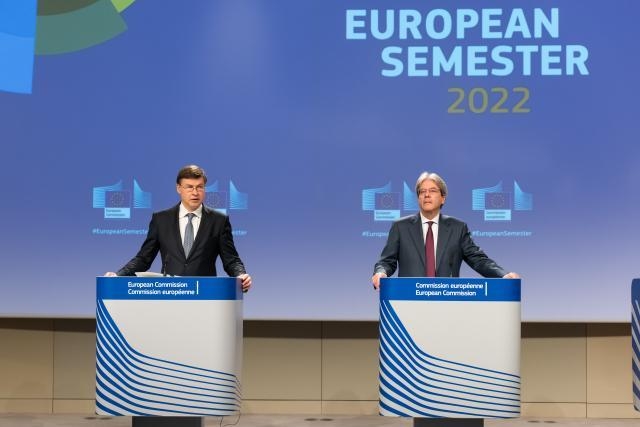REPowerEU in the focus of the Semester Spring Package recommendations
 Taking into account the exceptional circumstances brought about by Russia's invasion of Ukraine, the Commission this year, for the first time, included energy-related guidance as part of its country-specific recommendations in the Semester Spring Package. This means that each Member State is provided with targeted guidelines to propose a new and dedicated REPowerEU chapter in the national Recovery and Resilience Plans.
Taking into account the exceptional circumstances brought about by Russia's invasion of Ukraine, the Commission this year, for the first time, included energy-related guidance as part of its country-specific recommendations in the Semester Spring Package. This means that each Member State is provided with targeted guidelines to propose a new and dedicated REPowerEU chapter in the national Recovery and Resilience Plans.
The European Commission, in the Semester Spring Package’s presentation, said that policies to mitigate the impact of higher energy prices and support those fleeing Russia's military aggression against Ukraine will contribute to an expansionary fiscal stance in the European Union in 2022.
"With this European Semester Spring package, we are looking to sustain Europe's economic recovery from the pandemic, and simultaneously phase out our strategic dependence on Russian energy before 2030," said Valdis Dombrovskis, the Commission's executive vice-president for the economy, while announcing that uncertainty and strong downside risks to the outlook led the Commission to propose maintaining the general escape clause in 2023, and deactivating it as of 2024.
So what is the focus of Semester Spring Package’s guidance?
Taking into account the exceptional circumstances brought about by Russia's invasion of Ukraine, the Commission this year, for the first time, included energy-related guidance as part of its country-specific recommendations. This means that each Member State is provided with targeted guidelines to propose a new and dedicated REPowerEU chapter in the national Recovery and Resilience Plans, with the goal of reducing the dependency on fossil fuels through reforms and investments in line with the objectives of REPower EU. The plan, presented on 18th of May with the aim to reduce Europe’s dependence from Russian fossil fuels “as soon as possible” and well before 2030, by accelerating the European Green Deal building on the Fit for 55 package, has indeed at its heart investment in renewables.
“Today’s recommendations translate REPowerEU objectives into reforms and investments for Member States” explained Dombrovskis, adding that this year the Commission also propose to update its employment guidance “with a strong focus on making the green transition socially fair, as well as on dealing with the social impact of Russia’s invasion of Ukraine”. For example, supporting people who flee the war, in terms of labour market access and social integration, supporting vulnerable households given the increase in energy prices and cost of living, addressing labour shortages and skills mismatches through skills and learning policies, and meeting EU targets on employment, skills and poverty.
The Commissioner of Economy, Paolo Gentiloni, reminded how “we collectively face a mountain of investments in the coming years, which will require the mobilization first of all of the private but also of the public sector: not only for the green and digital transition, but also to strengthen our strategic autonomy, our common defense, our energy independence”.
The Commission in fact estimated additional investments needs of €650 billion per year up to 2030 for the twin transition, of which €520 billion for the green transition alone. “And this is likely to be at the lower end of the actual needs, as a result of the need to frontload energy investments in the wake of the Russian invasion of Ukraine” pointed out Gentiloni, while underlining that delivering the REPowerEU objectives will require an additional investment of €210 billion between now and 2027. Gentiloni and Dombrovskis both stressed how the full and timely implementation of national recovery and resilience plans is particularly important, as the NextGenerationEU, and its Recovery and Resilience Facility, remains the “most powerful tool for delivering these investments and reforms”.
Documents:
https://ec.europa.eu/info/publications/2022-european-semester-country-reports_en
https://ec.europa.eu/info/publications/2022-european-semester-spring-package-communication_en